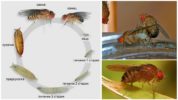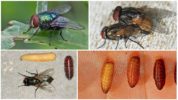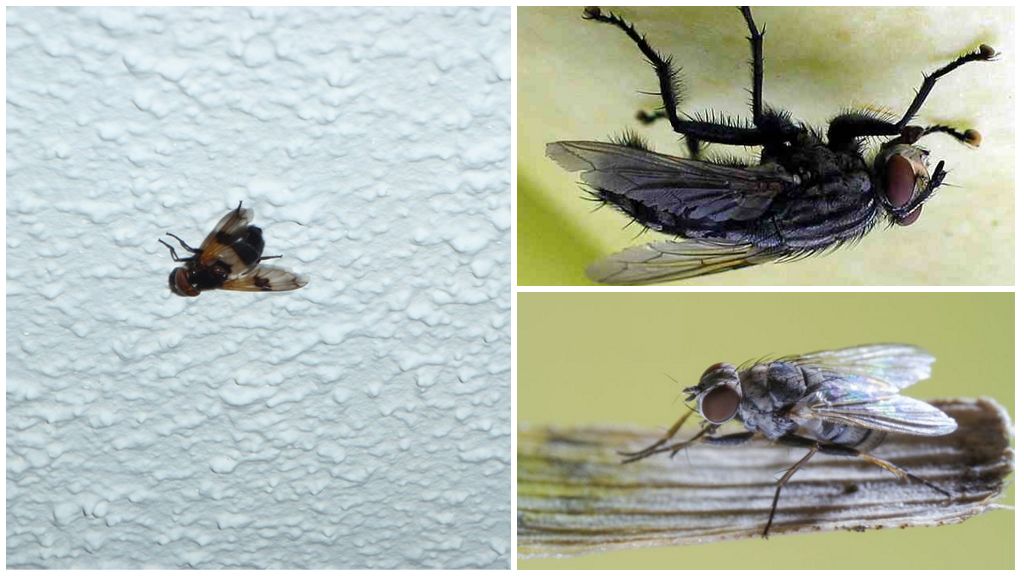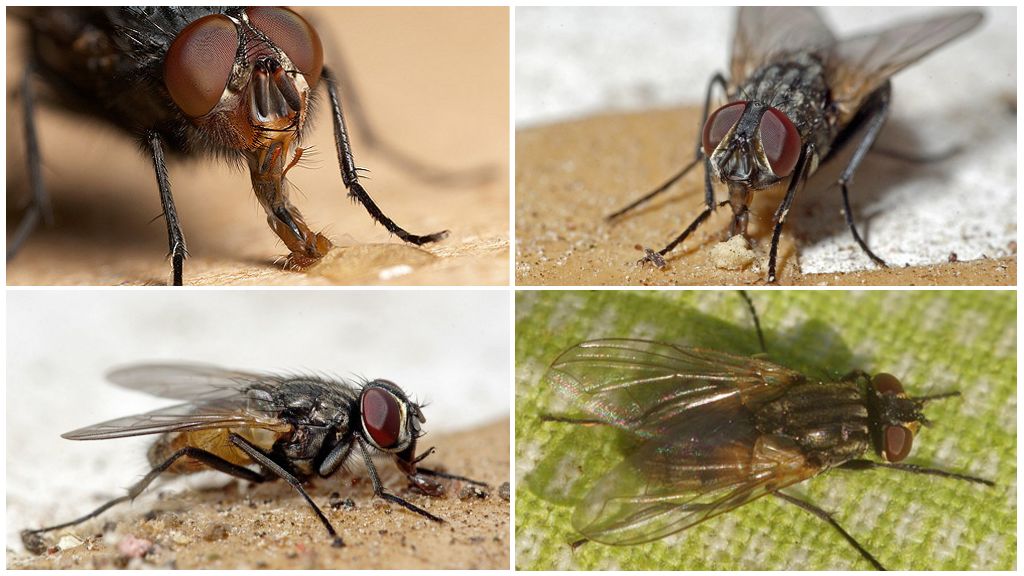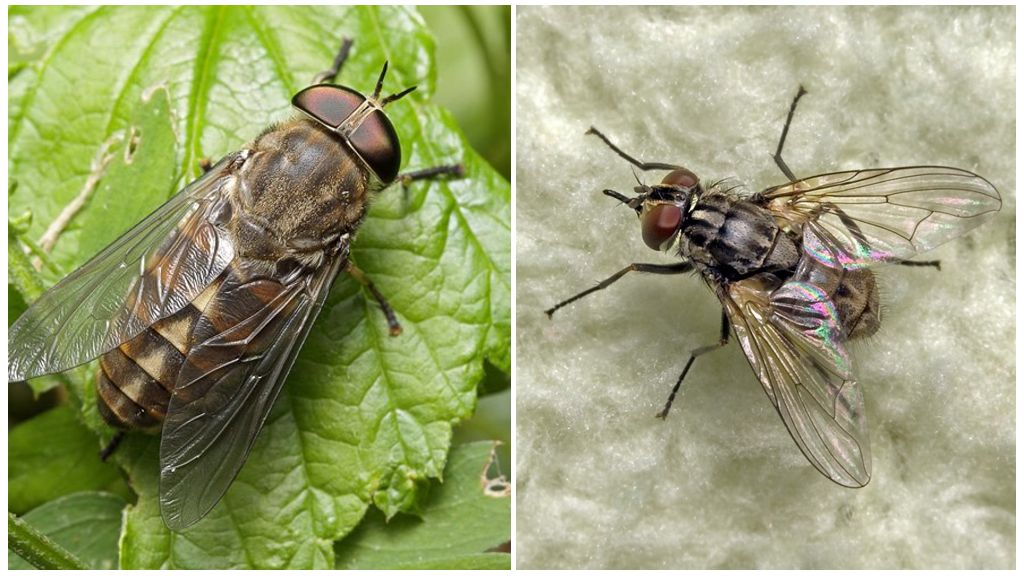- Fly life cycle
- Breeding flies
A lot of different pests live near the person. One of the most unpleasant of these "neighbors" is a fly. This buzzing insect annoys with its endless screeching around the room and an unpleasant buzz. In addition, this small nondescript creature can pose a serious danger to humans, because it is a carrier of infectious diseases. It is not always easy to get rid of pests, since flies breed fast enough.
How many eggs does a fly lay
Common flies - one of the most common family species, which is also found in the non-domesticated environment. Their lifespan depends on the ambient temperature, and therefore, full life cycle may take up to 4 weeks.
On a note!
The reproductive function of insects is quite well developed: during the season, a pair of heterosexual individuals is able to recreate a family of many thousands. One female lays up to 1000 eggs in her life.
In the process of life, an insect undergoes 4 stages of development (egg, larva, pupa and adult).
Egg development process
Mating of insects occurs in the spring. The male fly climbs onto the female’s back, remaining in this position for some time. Sometimes flies mate in flight: the male hugs the female with her legs and clamps her wings, flying into the air. This process of fertilization is observed in female flies.
After copulation, the female goes in search of a suitable place where later she will lay eggs. Moreover, the female is guided exclusively by the sense of smell and taste. Favorable for egg laying are places with all kinds of human waste, where there is an accumulation of rotten fruits and vegetables, rotted meat products, as well as cattle manure.
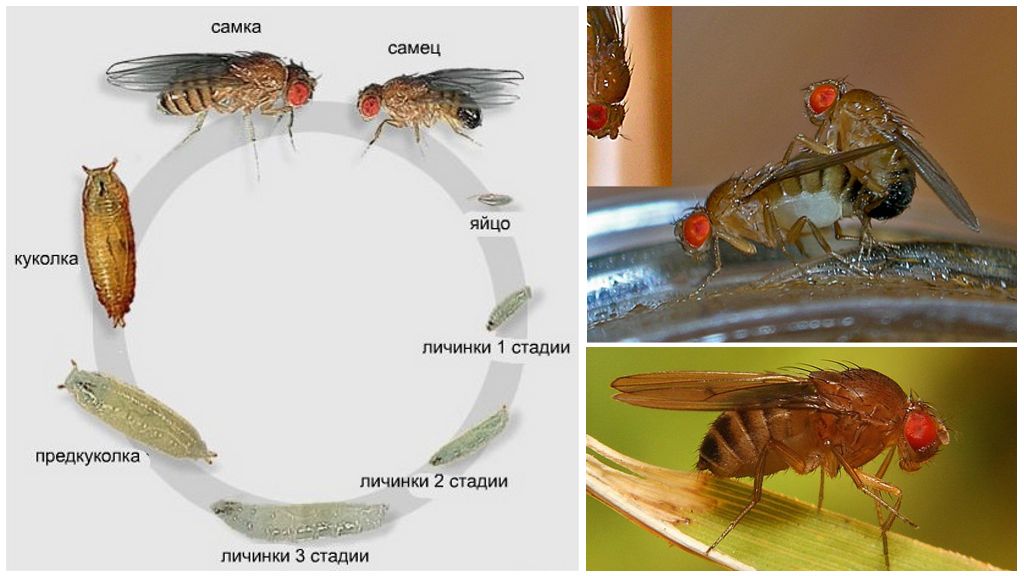
Having picked up a secluded place, a pregnant fly lays about a hundred eggs, the length of which does not exceed 1 mm. After several hours, they become vermiform footless larvae, referred to by the fishermen as maggots. This development period can vary: at home, it usually takes about 8 hours, but if the eggs laid by a fly develop in nature, then the larvae of them can appear after 20 hours.
On a note!
The insect is able to live in conditions from 10 to 40 degrees, the most favorable is a temperature of 18-25 degrees.
How the larva develops
This stage of life of the pest is called "nutritious", its duration is usually not more than a week. During this period, the larvae rush in search of heat, food and moisture, more and more delving into organic waste. In this way, they hide from their natural enemies (birds and animals), as well as the harmful rays of the sun for them. Using digestive juices, the larvae thin the food to an acceptable consistency for them.
On a note!
After 5-6 days, the grown fly larva, whose size increases 60-80 times, begins to darken, acquiring a brownish brown color. After which it pupates, moving to a new stage of its development.
Chrysalis stage
The most passive stage in the development of a fly is the pupal stage, the duration of which does not exceed 5-7 days.The hardening larva skin is transformed into a puppet cover (puparium), inside which the process of metamorphosis is completed: the larva tissue breaks down and all vital organs of the individual are formed. After the required time, flies (adults) are born.
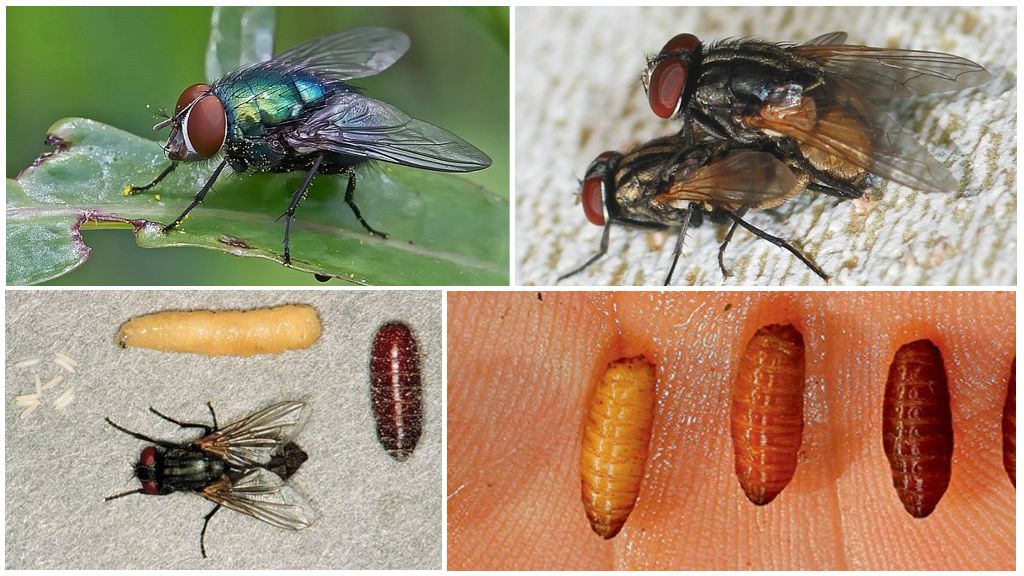
Adult Development
In order to soar into the air, the newly minted individual is forced to spend several more days among organic waste in anticipation of its wings drying out and strengthening. As soon as the insect rises to the wing, it is full and capable of reproduction. Usually a young female lays the first egg laying after 1-2 weeks from the moment of birth.
With the onset of autumn, most of the flies die. Surviving individuals remain for the winter, setting off in search of favorable secluded places. With the advent of heat, the reproduction of flies resumes.
Preventive actions
Do not forget that flies are the main carriers of infectious diseases and pathogenic bacteria. When flying, insects carry dangerous particles very quickly. Especially unfavorable appearance in the house green carrion fly, which lives both among flowering strongly smelling plants and in dirty places: manure, various rotting waste, as well as on decaying corpses of animals.
Due to the fact that flies breed quickly enough, their penetration into the house completely undesirable. To prevent their spread, you must follow simple rules:
- do not leave vegetables, fruits, meat, fish, sweets and other products in the public domain for a long time, as they are the favorable environment for the development of eggs;
- try to maintain cleanliness in the house, timely disposing of food and household waste;
- use mosquito nets: as flies appear in housing, usually flying in windows or doors;
If the pests could still appear in the house, you must use folk and chemical agents for their destruction.
